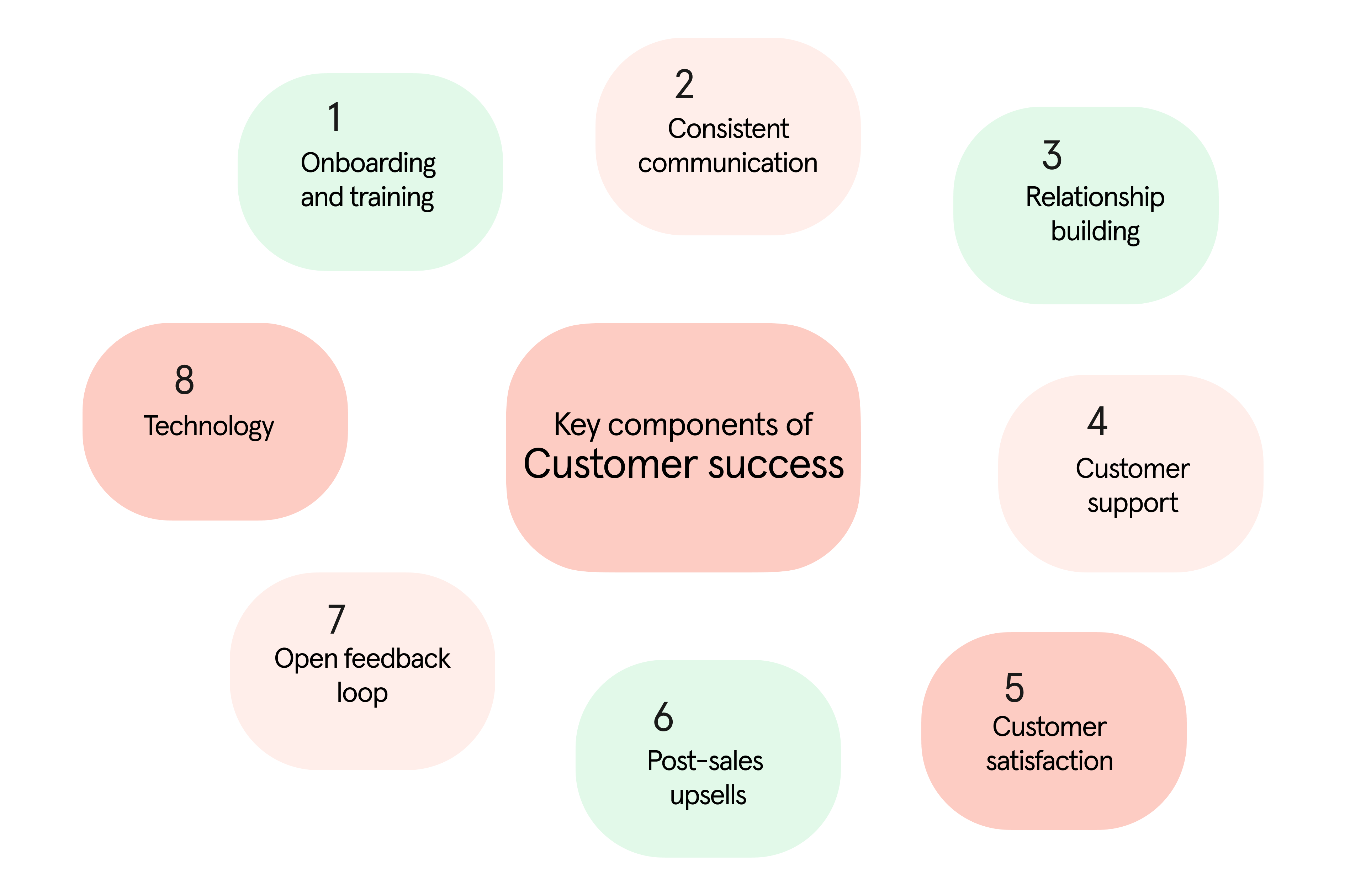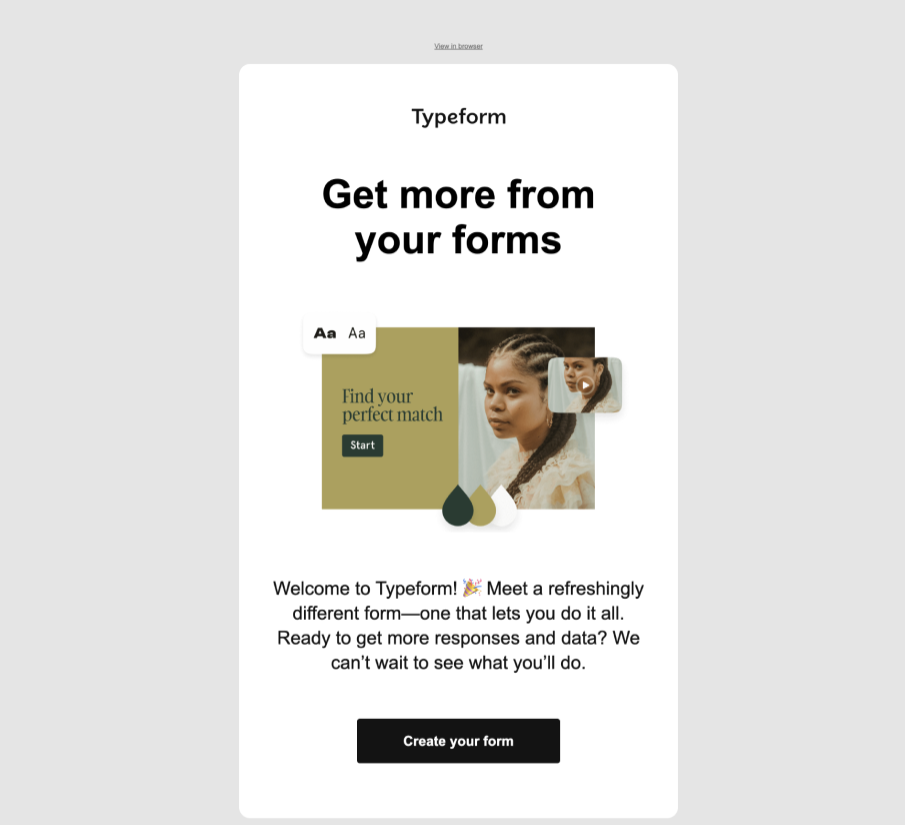Opinions and Expertise
The beginner's guide to building a customer success strategy
A comprehensive customer success strategy can break down customer data silos, improve sales and marketing efforts across the organization, and provide a better, more consistent customer experience. Here's how to build a customer success strategy.

You spend thousands—if not millions—of dollars on lead generation efforts, marketing, and sales to bring in a steady stream of customers. But what do you do once you close those deals and sign up customers?
Don' t stop " courting" once you acquire those customers. Instead, double down on creating an exceptional customer experience. And give them everything they need to be successful—resources, support, proactive communication, and more.
It starts with a well-defined and clear customer success strategy, process, and function.
What is customer success?
As the name implies, customer success (CS) is about helping customers achieve success. It involves anticipating customer challenges and proactively communicating and offering resources and answers to their questions so they can use your product or service to meet their goals.
Customer success not only benefits the customer, but it helps you drive:
- Customer satisfaction
- Retention
- Customer loyalty
- Revenue
- A better customer experience (CX)
Customer success also helps you become a truly customer-centric organization—one where you put the customer at the center of everything. One of the best ways to build a customer-centric business where customers excel is by building a customer success strategy focused on outcomes, proactive communication, and feedback.
How to get started
Before you start designing your customer success strategy, identify what you' re trying to achieve, your goals, and how you' ll measure success.
Key performance indicators (KPIs) can help show you how effective your customer success program is and where you can improve, making them a crucial part of the planning process.
While customer success KPIs for every organization will look slightly different, the ones you choose to track are dependent on the goals you set for your customer success strategy.
For example, if you want it to grow revenue, tracking monthly recurring revenue (MRR), customer satisfaction, and retention rates would be valuable metrics to tie to your KPIs.
KPIs, goals, and metrics are crucial, but you can' t build a strategy without first understanding your customers. This is where customer journey mapping comes into play. As HubSpot explains, a customer journey map is a visual representation of your customers' experience with your business. It shows you what they need at every stage of their customer journey and any points of friction.
By providing those insights, your journey map helps you not only understand your customers and how they experience your company but, done correctly, it also helps you empathize with them.
Designing your customer success strategy
Any customer success program worth its weight centers around the customer and understanding who they are and how they experience your product. Along with these foundational elements, your customer success strategy should include other key elements, like onboarding, an open feedback loop, and more.
Let' s explore eight key components of a stellar customer success strategy.
1. Onboarding and product training
After the sale, one of the first experiences your customers have with you is their onboarding. If you do it well, you can set your customers up for success. But if your onboarding leaves them with more questions than answers or doesn' t show them how to use your product, customer churn might come sooner rather than later.
A quality onboarding process should include:
- A welcome message (or journey) that helps them get up and running fast
- Educating customers on product features and benefits
- Training, from live sessions to online tutorials to self-service learning
- A robust resource library that proactively supports customers through FAQ resources, how-to guides, and more
Tip: Find the right balance of providing the necessary support without overwhelming customers
2. Consistent communication
Like with anything, communication is vital. But with customer success, it' s not just about updates, check-ins, or customer service responses. It' s about providing value with every interaction—proactively.
What value looks like varies across industries, but customer-specific insights, tips tailored for individual use cases, and any industry news that would impact your customers is a good place to start.
Tip: Create a consistent communication cadence with your customers based on their needs—some may want more hand-holding while others may prefer monthly calls.
3. Relationship building and management
Nothing' s worse than making your customers feel like they' re nothing more than a transaction. Building genuine customer relationships has never been more paramount, especially for subscription-based companies.
Customer success managers (CSMs) should understand your customers, build trust, and act as partners to help them achieve their desired business outcomes. Proactive communication and a dedication to their success can foster a relationship built on personal connections over dollars.
Tip: Don' t put your relationship on autopilot. Take time to build a genuine relationship with your customers.
4. Customer support
If your customers have an issue with your product, need help, or there' s a bug, they' ll likely contact customer support. Your customer service team can create an exceptional experience or drive your customers to churn. Strong customer support teams rely on tools and technology to properly:
- Provide customers with the level of support required
- Seamlessly share data so they can better serve customers
Tip: Offer customers various ways to get support, like phone, email, and chat options.
5. Customer satisfaction
Customer satisfaction is a crucial indicator of customer retention (or churn) and is a general business best practice. Post-sales feedback surveys and metrics like net promoter score (NPS) or customer satisfaction score (CSAT) can help you stay on top of keeping your customers happy.
Tracking CSAT helps you be even more proactive in prioritizing your customers and their needs while guiding them to achieve their goals. All these things can ensure your customers are happy with your product and getting the value they need to be successful.
Tip: Send regular feedback surveys and check in often on your customers.
6. Post-sales upsells
Do you have more than one product that can help your customers meet business outcomes? Probably. Share information about and upsell or cross-sell your other offerings. But make sure it' s less about increasing revenue and more about how customers can accomplish their goals with your additional offerings.
Tip: Only sell your customers more products or services if they will truly help your customers achieve their goals.
7. An open feedback loop
Create a cycle of open feedback with your customers where they can regularly share suggestions with you. Their feedback is a gold mine of data—use it to improve your customer success strategy, products, services, and more.
Make it easy for customers to give you feedback. Here are a few ways to make it as effortless as possible:
- Share a link to a feedback form in your monthly newsletter
- Use in-app surveys
- Ask customers directly on a call or during a meeting where someone can record their responses
Tip: Don' t just collect feedback—act on it and show your customers you genuinely care about how you can better serve them.
8. Technology
Technology has always been a game-changer for businesses, but with the introduction of robust artificial intelligence (AI) solutions, tech has become even more impactful. Tools and technology can help your customer success team in a few different ways:
- It automates interactions using AI to draft email copy, schedule emails, and talk with customers through chatbots.
- It lets customers self-serve by providing an easily accessible resource library and community where customers can help themselves with little interaction on your end.
- It scales personalization using customer relationship management (CRM) tools that segment customers based on behaviors to personalize experiences, support, and content.
- It helps you collect feedback—forms and surveys help you gather feedback and can integrate with your tech stack to make sharing that data effortless.
- It provides deeper insights into your customers by collating data, identifying patterns, and predicting future customer behaviors.
Measuring customer success starts with data. A complete tech stack where tools communicate with each other helps you not only track success metrics but also allows you to share data across the organization to create a better customer experience (CX).
Tip: Build a connected and robust tech stack that makes data sharing easy and helps create a better CX.
What’s next?
Building a customer success strategy isn' t just designing a strategy and getting some technology together. It should be built around success metrics, your goals for the customer success program, and, most importantly, your customers.
Once you' ve done that, it' s time to roll out your customer success strategy.




.png)
.png)